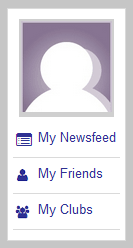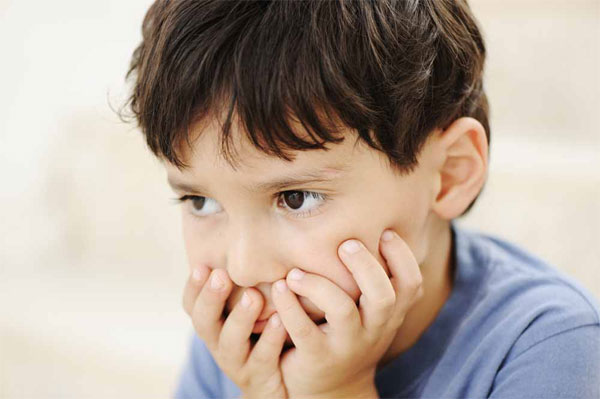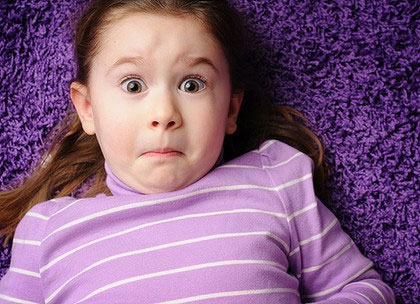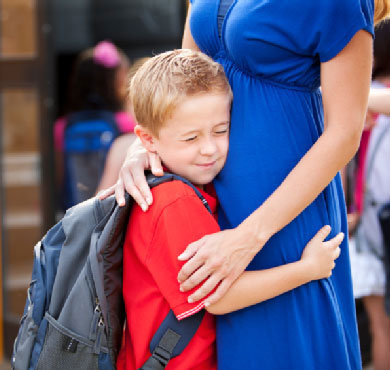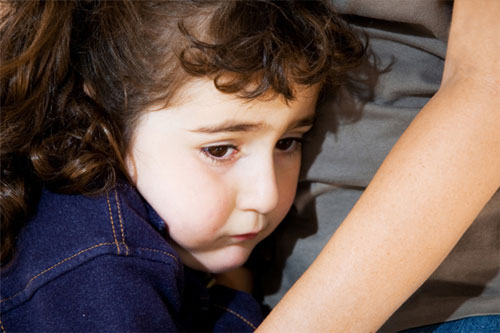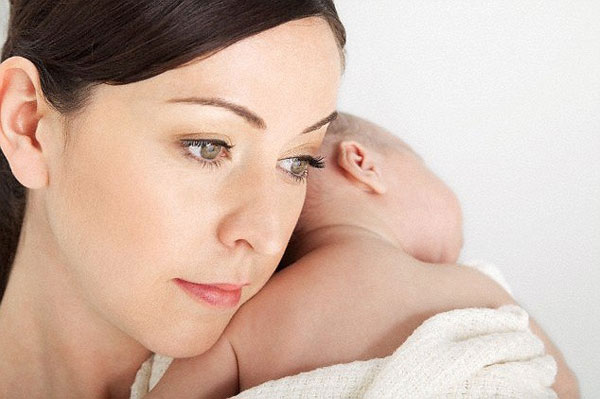All children experience anxiety at some point of time. Here are the different anxiety disorders that can affect your child. All individuals experience anxiety at some moment in their lives. Anxiety can be defined as a feeling of unease without any noticeable cause. Therefore, even if the situation is normal, the individual still feels afraid that something will happen to him. A certain level of anxiety is natural as it keeps an individual from attempting a task, which is dangerous. However, when anxiety proceeds beyond the acceptable level, it leads to an anxiety disorder. Anxiety disorders are common in children, but are often ignored or overlooked. This prevents children from receiving treatment, while they are still in the early stages of the disorder. It is estimated that most adults seeking therapy for anxiety disorders displayed the initial symptoms when they were children. Diagnosing an anxiety disorder involves determining the degree of anxiety, as well as how much it is affecting a childs normal life. Here are some of the different anxiety disorders. In this articleGeneralised DisorderPanic DisorderObsessiveCompulsive DisorderGeneralised Disorder A generalised anxiety disorder is a term given to anxiety that involves a number of tasks or events. This form of anxiety occurs very often and can last for six months or longer. This disorder is usually mistaken for excessive worrying. It can put the child under a great deal of stress and prevent him from functioning normally. There are a variety of symptoms associated with generalised anxiety. Since the child cannot control his anxiety, he will constantly be on edge and will display restless tendencies. This will lead to fatigue, irritability, tension, trouble concentrating on regular tasks, and difficulty in falling asleep. The child may also experience periods where he cannot remember anything because his mind goes blank. Panic Disorder A panic disorder is not the same as a panic attack. A panic attack is described as a sudden intense feeling of fear, accompanied by certain physical symptoms, in order to try and escape the perceived threat. A panic attack can usually last for about thirty minutes with its most intense effects being felt around ten minutes into the attack. In a panic disorder, a child may experience unexpected panic attacks at regular intervals. This causes the child to become worried because he does not know when the next attack is going to happen. Repeated attacks can lead to changes in normal behaviour, in order to cope with the attack. Panic attacks may arise out of anxiety associated with a situation that is out of control. Physical symptoms associated with panic attacks include increased heart rate, trembling, sweating, difficulty breathing, nausea, dizziness, inability to swallow, abdominal pain, and a feeling of being out of control. Obsessive-Compulsive Disorder This disorder deals with very specific physical manifestations of anxiety. In this disorder, the child becomes obsessed with certain ideas, urges, or thoughts that are unrelated or unwanted. These obsessive thoughts are often accompanied by intense, repetitive behaviours, which the child has no control over. The behaviour turns into a compulsion when the time spent on it becomes excessive and begins to interfere with a childs normal functioning. A particular behaviour becomes compulsive when it begins occupying a lot of time and proceeds to become a disruptive influence. The most common obsessions deal with dirt or a fear of being contaminated by germs, constant need for reassurance, a need to have objects arranged in a particular order, etc. Compulsive behaviours in response to these obsessions include constantly washing hands or taking baths, locking and unlocking doors, using tissues or towels to touch objects, etc. The behaviour is labelled as compulsive, if it occupies more than an hour each day. Anxiety disorders affect 25 percent of adults. Although there are no statistics available for the number of children affected, it is estimated that at least 50 percent of them will experience an anxiety disorder during childhood. Anxiety is a condition which can be treated and cured. It requires recognising that the child may have an anxiety problem. If your child is diagnosed with an anxiety disorder, he can make a full recovery following treatment.
All children experience anxiety at some point of time. Here are the different anxiety disorders that can affect your child. All individuals experience anxiety at some moment in their lives. Anxiety can be defined as a
feeling of unease without any noticeable cause. Therefore, even if the situation is normal, the individual still feels afraid that something will happen to him. A certain level of anxiety is natural as it keeps an individual from attempting a task, which is dangerous.
However, when anxiety proceeds beyond the acceptable level, it leads to an anxiety disorder. Anxiety disorders are common in children, but are often ignored or overlooked. This prevents children from receiving treatment, while they are still in the early stages of the disorder. It is estimated that most adults seeking therapy for anxiety disorders displayed the initial symptoms when they were children.
Diagnosing an anxiety disorder involves determining the degree of anxiety, as well as how much it is affecting a child's normal life. Here are some of the different anxiety disorders.
Generalised Disorder
A generalised anxiety disorder is a term given to anxiety that involves a number of tasks or events. This form of anxiety occurs very often and can last for six months or longer. This disorder is usually mistaken for excessive
worrying. It can put the child under a great deal of stress and prevent him from functioning normally.
There are a variety of symptoms associated with generalised anxiety. Since the child cannot control his anxiety, he will constantly be 'on edge' and will display restless tendencies. This will lead to fatigue, irritability, tension, trouble concentrating on regular tasks, and difficulty in falling asleep. The child may also experience periods where he cannot remember anything because his mind goes blank.
Panic Disorder
A panic disorder is not the same as a
panic attack. A panic attack is described as a sudden intense feeling of fear, accompanied by certain physical symptoms, in order to try and escape the perceived threat. A panic attack can usually last for about thirty minutes with its most intense effects being felt around ten minutes into the attack.
In a panic disorder, a child may experience unexpected panic attacks at regular intervals. This causes the child to become worried because he does not know when the next attack is going to happen. Repeated attacks can lead to changes in normal behaviour, in order to cope with the attack. Panic attacks may arise out of anxiety associated with a situation that is out of control. Physical symptoms associated with panic attacks include increased heart rate, trembling, sweating,
difficulty breathing, nausea, dizziness, inability to swallow, abdominal pain, and a feeling of being out of control.
Obsessive-Compulsive Disorder
This disorder deals with very specific physical manifestations of anxiety. In this disorder, the child becomes obsessed with certain ideas, urges, or thoughts that are unrelated or unwanted. These obsessive thoughts are often accompanied by intense, repetitive behaviours, which the child has no control over. The behaviour turns into a compulsion when the time spent on it becomes excessive and begins to interfere with a child's normal functioning.
A particular behaviour becomes compulsive when it begins occupying a lot of time and proceeds to become a disruptive influence. The most common obsessions deal with dirt or a fear of being contaminated by
germs, constant need for reassurance, a need to have objects arranged in a particular order, etc. Compulsive behaviours in response to these obsessions include constantly washing hands or taking baths, locking and unlocking doors, using tissues or towels to touch objects, etc. The behaviour is labelled as compulsive, if it occupies more than an hour each day.
Anxiety disorders affect 25 percent of adults. Although there are no statistics available for the number of children affected, it is estimated that at least 50 percent of them will experience an anxiety disorder during childhood. Anxiety is a condition which can be treated and cured. It requires recognising that the child may have an anxiety problem. If your child is diagnosed with an anxiety disorder, he can make a full recovery following treatment.
